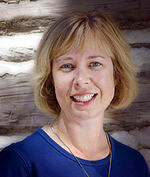Wouldn’t it be great if the answer to this question was simple?
I’d love to tell you it will take X number of weeks to reach profitability after you open your small business. But if I did, you shouldn’t trust me.
Because the answer is unknown before you open your doors.
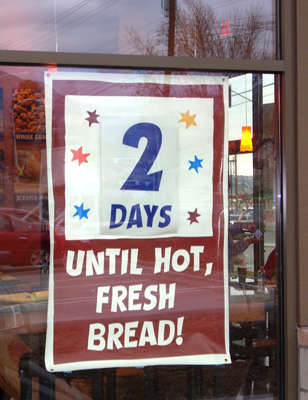
And that’s why everyone isn’t an owner.
Taking the risk to open a small business is a leap into the unknown.
So even though I get this question over and over from people thinking about opening a bakery, I always like hearing it because I know the person asking is focusing on what’s important.
Why is this particular question so important?
“Alice came to a fork in the road. 'Which road do I take?' she asked.
'Where do you want to go?' responded the Cheshire Cat.
'I don't know,' Alice answered.
'Then,' said the Cat, 'it doesn't matter.”
― Lewis Carroll, Alice in Wonderland
When you look at a large group of small business, you will almost always see a wide range of financial results. We do this annually when we collect income statements from all the Great Harvest bakeries and compare sales, costs and bottom lines. We’ve done this analysis for many years and we always see businesses with strong and weak financials.
The key to being in the strong group of profitable bakeries is setting a goal and managing daily to hit the goal. Good business owners know their numbers and adjust quickly at every fork in the road.
Science and Art
One of my first jobs was to teach people how to make bread. I always started by telling people there is an art and a science to breadmaking. The “science” part – calculating temperatures, measuring ingredients, recording data and precise timing – was easier for me to teach. Teaching the “art” side – the look of correctly milled whole wheat flour, the feel of a perfect dough at the mixer, the tightness of a well-kneaded loaf – required more work, repetition and patience. And sometimes a bit of luck.
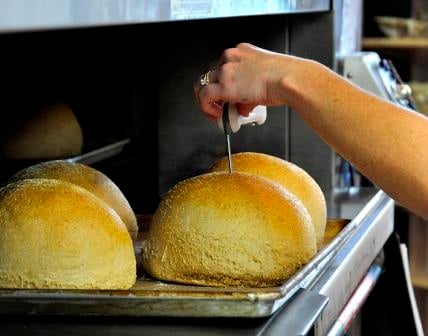
There is also a bit of art and a bit of science to creating a profitable small business.
Break-even Formula
The science part tells us what we need to accomplish to be profitable. A simple equation calculates the point where any business goes from losing to making money – this is called the “break-even point.”
Break-even Sales = Fixed Costs / 100% - Variable Costs %
So to calculate it, you need to know your fixed and variable costs.
Fixed costs are the expenses of the business that you have to pay regardless of how much you produce. For local retail businesses, rent is going to be your biggest fixed cost. Other fixed costs include business insurance, property taxes and professional services.
Variable costs are the expenses that rise when you produce more. For example in a bakery, all the ingredients and labor that go into making bread, sandwiches and sweet are variable costs.
This chart may help you visualize the break-even point:
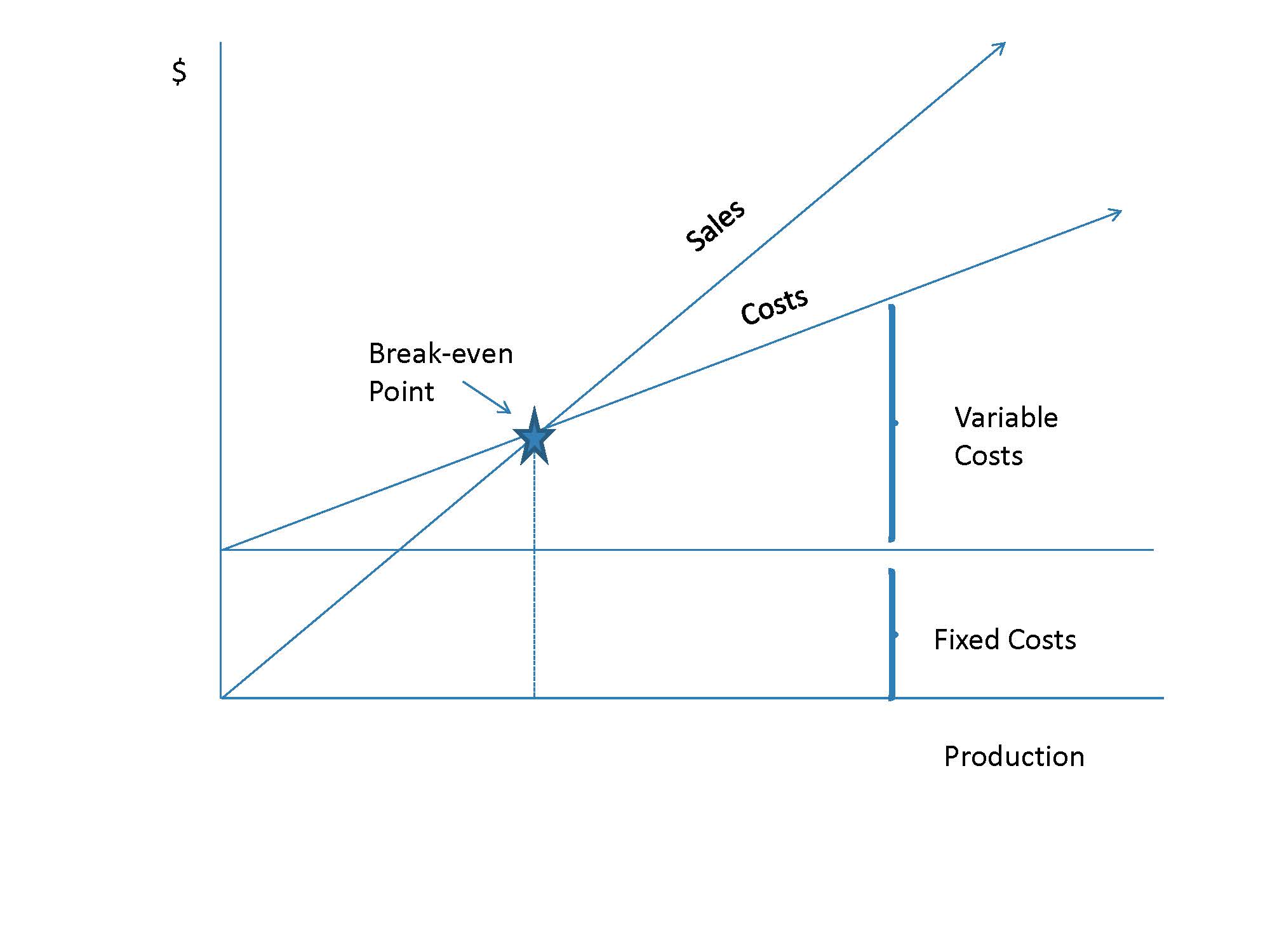
Once you are comfortable using this basic break-even formula, you can also calculate an adjusted break-even to find the point where your sales are not only covering your costs, but also paying your business debt (if any) and paying yourself. To do this, just add your debt payments and desired take-home to your fixed costs before you divide.
Break-even Sales = (Fixed Costs + Debt payments + Desired owner take-home) / 100% - Variable Costs %
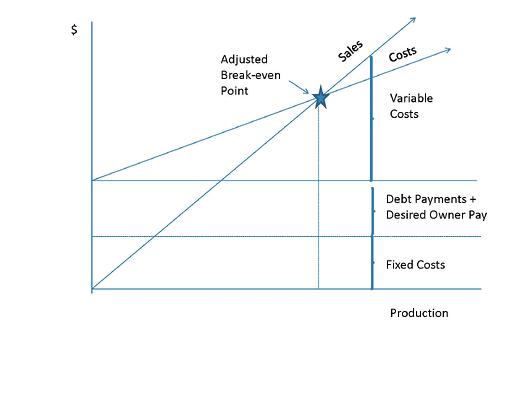
The Art of Building Trust and Growing Sales
How long will it take to get my sales up to that star on the chart? That’s where the art side comes in. It’s all about building relationships now. Customers buy from businesses and people that they know, like and trust. (Yes, I’m a Duct Tape Marketing fan.) I recommend you focus on these 3 categories as a starting point:
Relationships with your local community. For a new local retail business, you want to start by getting out in the community and meeting all your neighbors. Listen really well to learn what’s important to your community and how you can help make the neighborhood even better. While you are building out your store, be sure to take advantage of opportunities to share your story and set the stage for your opening day.
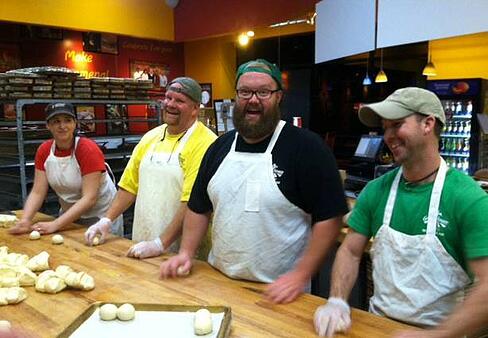
Relationships with employees. As a small business owner, you will be tempted to do it all yourself, but you can’t. Your employees will be the face of your business to many of your customers. They will treat your customers that way you treat them. Prepare them well for the questions that will be asked of them and the problems they will have to solve without you.
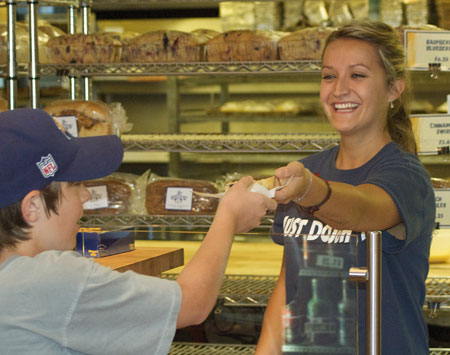
Relationships with customers. We are all creatures of habit. To grow sales, you have to make it easy and worthwhile for your customers to build a habit of shopping with you. What do they care about? How can you solve a problem they have? Get clear on that and let them know how you can fill that need and even make their day better. Once you have a base of customers, be sure to keep impressing them with your products and service and giving them opportunities to refer you to others.
When you’ve built a strong foundation for the art and the science parts of your business to flourish, you’ll hit that magic break even point.
Wondering if a great Harvest bakery cafe might be the right business for you?



